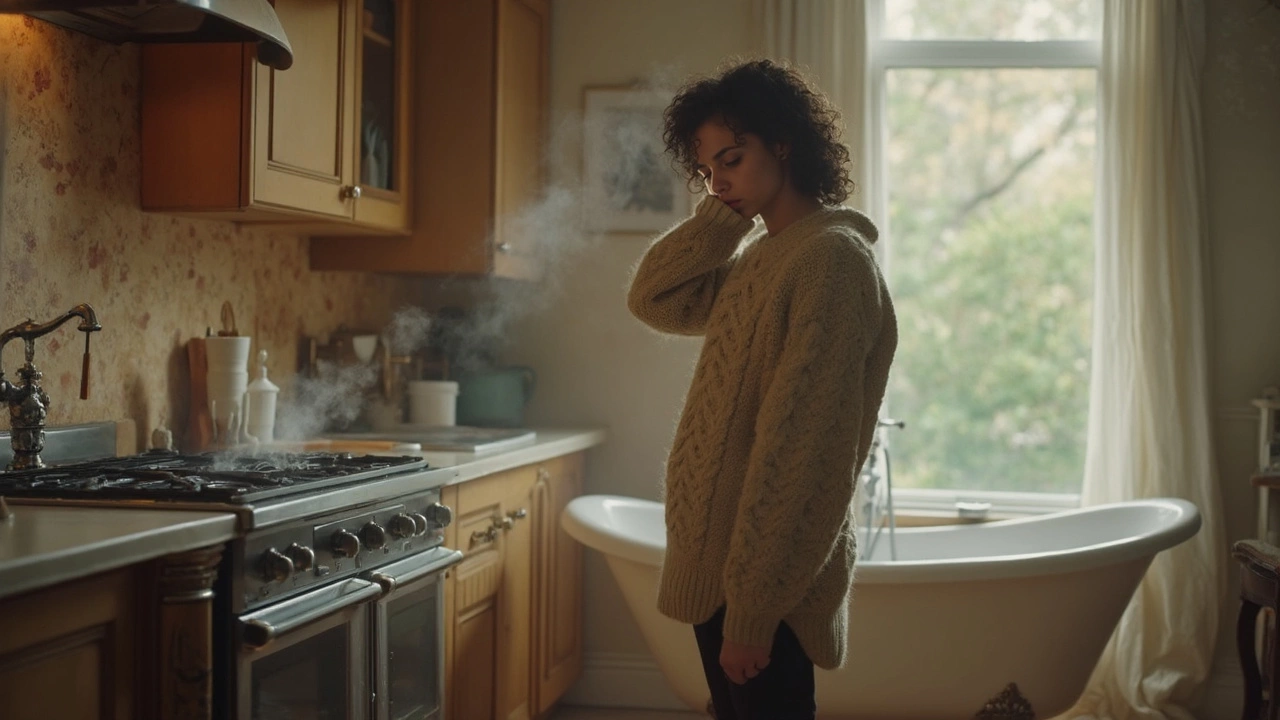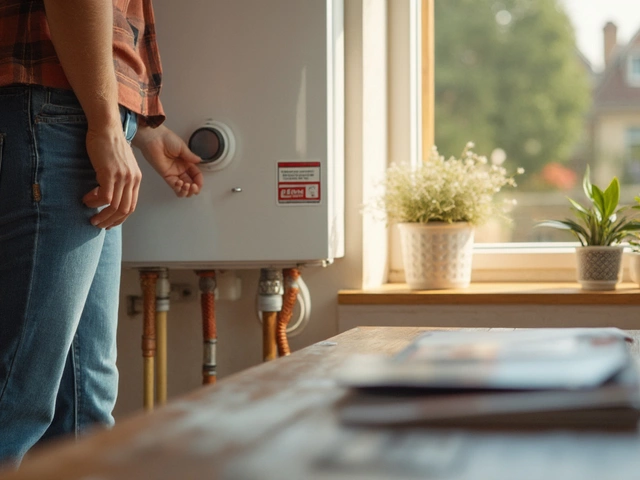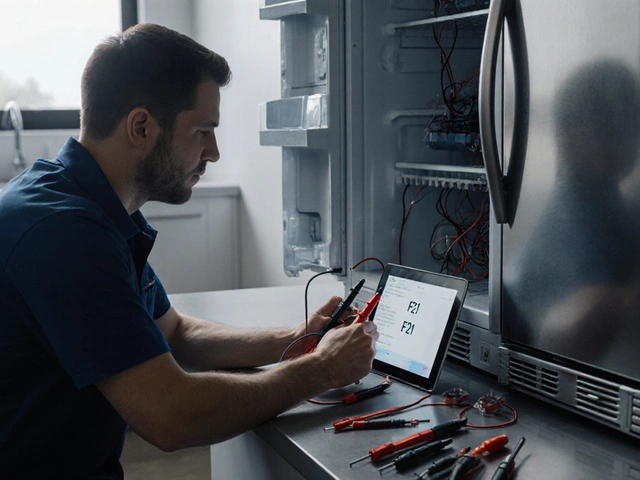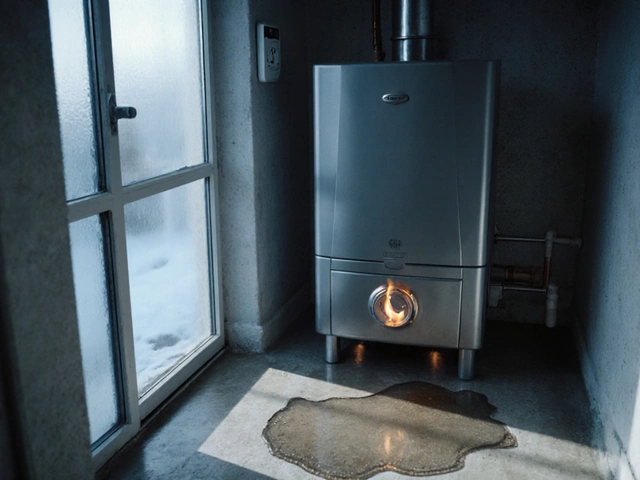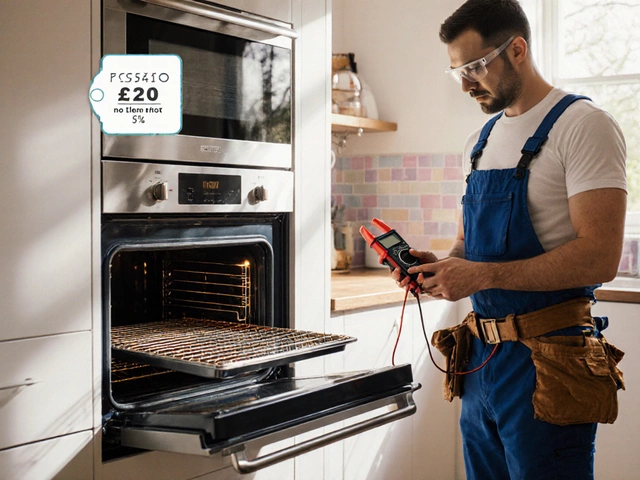Isn’t it frustrating when you turn on the hot tap in the bathroom only to be greeted with cold water, while your kitchen gets all the heat love? It’s like your home’s playing favorites. Well, you’re not alone in this; it’s a pretty common issue. Let’s explore what might be going on.
First off, think about the water heater itself. Is the kitchen closer to the heater than the bathroom? Longer pipe runs can mean more heat lost before the water even gets to the tap. Also, older or poorly insulated pipes can be sneaky culprits, leaking heat along the way.
Now, consider the possibilities within your plumbing configuration. Do you have different size pipes or perhaps a temperamental mixing valve acting up? Sometimes it’s the small components that throw a wrench in the works.
- The Mystery of Hot and Cold
- Common Culprits
- Check Your Pipes
- Temperature Settings
- Sediment and Buildup
- DIY Solutions and When to Call a Pro
The Mystery of Hot and Cold
Ever wonder why hot water seems to have a mind of its own, greeting you in the kitchen but snubbing you in the bathroom? Let’s unravel this plumbing puzzle. There are a few common suspects causing this mystery, and understanding them is the first step toward getting things balanced.
Is It the Distance?
The most straightforward explanation could be the distance between the water heater and the faucet. The further the water has to travel, the cooler it gets by the time it reaches its destination. If the kitchen is nearer to the water heater than the bathroom, this could explain the disparity.
Piping Predicaments
Another factor is the material and state of your pipes. Older or poorly insulated pipes can lose heat along the way. Copper pipes, although great for conduction, can also lose heat rapidly in uninsulated spaces. So, checking the type and insulation of your pipes may solve the hot water mystery.
Water Pressure Woes
Water pressure differences across areas in your home might also play a role. Sometimes the pressure is higher in one room, leading to faster delivery of hot water compared to other parts of the house. This can particularly be a factor in multi-story homes.
Mix and Match Valves
Lastly, don’t forget the mixing valves. These valves regulate water temperatures and can malfunction or get stuck over time. A problem here might cause more cold water mixing in with the hot, leaving you with a lukewarm surprise when you least expect it.
No matter the cause, the goal is to ensure you have consistent, reliable hot water throughout your home. Understanding these factors helps you tackle the issue head-on, potentially saving time and a few bucks while you're at it.
Common Culprits
When you’ve got hot water problems, pinpointing the common culprits could save you some headaches. Let’s break down the usual suspects.
Pipes and Their Journey
Your plumbing setup could definitely be at fault. Say your bathroom is farther from the heater than the kitchen, the hot water takes more time to travel through those pipes. It’s like when your pizza delivery guy takes the scenic route. Over time, with older homes especially, the pipes might also lose insulation or become partially blocked.
Sneaky Sediment Buildup
Inside your water heater, minerals from water can settle as sediment at the bottom of the tank. This buildup can actually affect the heater’s efficiency. You might notice fluctuations, where one moment there’s scalding hot water, and the next, nothing. A study showed that regular flushing of your tank boosts heater efficiency by up to 15%.
Temperature Settings and Valves
Sometimes, the solution is right under your nose. Are the temperature controls jacked up or set too low? The thermostat on the heater might need a tweak. Also, check out temperature control valves—these can be temperamental and restrict hot water, acting more like a stopper than a gate.
Pressure Balance Is Off
In some cases, it’s about the water pressure balance. If one section is frequently running hotter, it might be due to inconsistent pressure in pipes. Pressure-regulating valves might be the fix you’re missing.
Pipes Size Mismatch
Now consider the possibility of pipe size disparities. Older builds sometimes have a mix of pipe sizes, affecting water flow and heating time. Upgrading or recalibrating this part of your setup ensures a more equitable water heating experience.
Check Your Pipes
When it comes to puzzling hot water issues, your pipes might hold the key. First things first, take a look at the journey your water needs to make from the water heater to the bathroom. If the pipes are longer or have more twists and turns than needed, that could be part of the problem.
Pipe Size Matters
Funny enough, the size of the pipes can impact your hot water delivery. Wider pipes take longer to fill with hot water, meaning a longer wait until you get that satisfying warmth. On the flip side, narrow pipes might lead to higher pressure but can also cause issues if they’re too small.
Insulation: A Quick Fix
Heat loss through uninsulated pipes is another sneaky culprit. Adding pipe insulation can be a quick DIY task to try before calling a pro. Insulation keeps the heat in, making sure what leaves the heater stays hot.
Check for Leaks
Leaks can occur where you least expect them. Check for any damp spots or unusual drops in water pressure when taps are off. A small leak can drastically affect available hot water. Plus, fixing leaks not only solves the heat issue but can save on your water bill.
Old Plumbing?
If your home’s plumbing system has been around longer than your granddad’s jokes, it might be time for an update. Older pipes may not be as efficient as today’s standards, and upgrading could solve multiple issues in one swoop.
By focusing on these aspects, you can better diagnose whether your pipes are to blame for the hot water problem, or if there might be an entirely different gremlin at work.
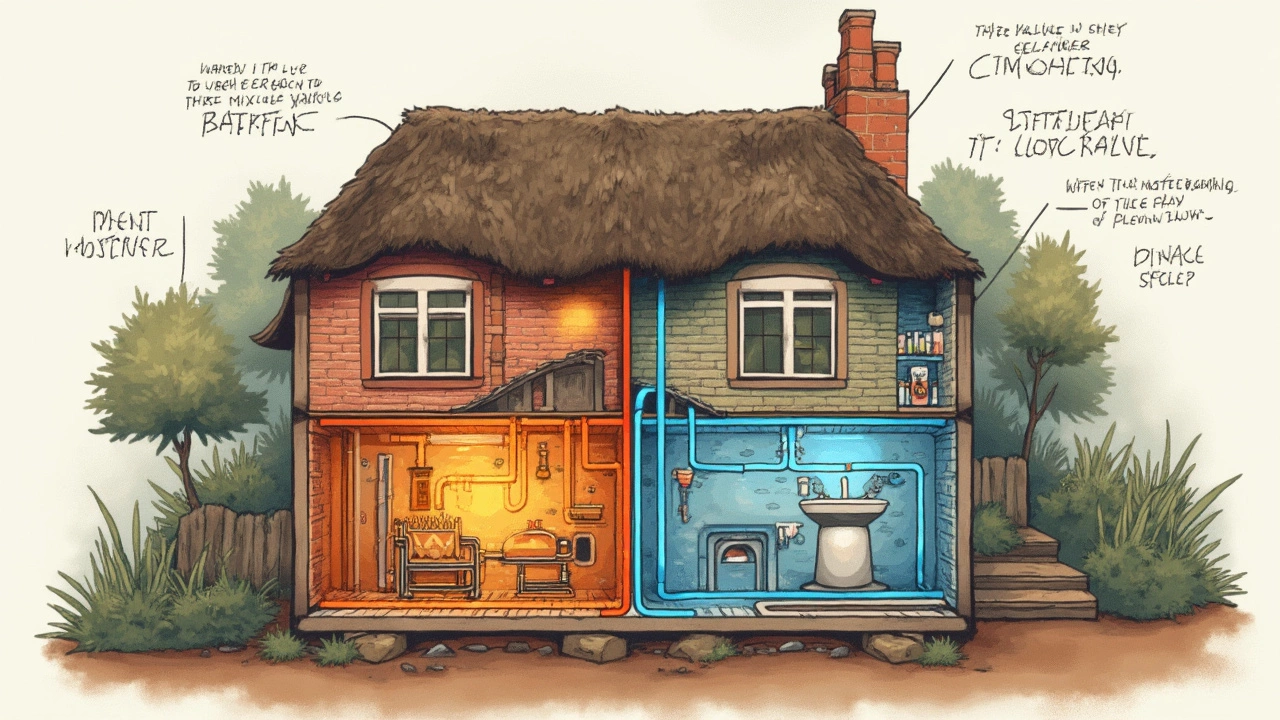
Temperature Settings
Let’s chat about the crucial role the temperature settings on your water heater play. It’s a simple thing to overlook, but the wrong setting can throw off your whole setup. If you’re getting scalding hot water in one room and chilly water in another, your heater’s thermostat could be the trickster behind the scenes.
Most water heaters have recommended temperature settings around 120°F (about 49°C). This not only helps in preventing any accidental scalding but is also energy efficient, saving you a few bucks on those utility bills. However, if the thermostat is accidentally set lower, your might find just warm water trickling in the bathroom, but your kitchen shows no issues.
Adjusting the Thermostat
Adjusting the thermostat on your water heater is generally straightforward. First, locate its thermostat dial, usually found at the bottom of electric heaters or within a panel in gas heaters. Make sure to switch off the power before opening any panels.
- Turn the dial slightly higher, and wait to see if this balances your hot water issue.
- For precision, use a thermometer to check the water temperature at different taps.
- If an adjustment doesn’t work, you might have a faulty thermostat needing professional fixes.
When The Setting Isn't the Issue
Sometimes the setting isn’t just the problem. Consider the element of shared networks. If you’ve got multiple bathrooms and all depend on one heating system, varying demand could tweak temperatures inconsistently. To alleviate this, upgrading to a unit tailored to your home’s demands can be a game-changer.
An alternative is installing a tankless water heater for areas that struggle with consistent temperature. These systems heat water on-demand rather than storing it, ensuring steady warmth whenever you call for it.
With proper attention to the temperature settings, you can often dodge unnecessary cold shower surprises while also optimizing energy use. It’s like hitting two birds with one stone!
Sediment and Buildup
Imagine this: your water heater's like a big teapot. Over time, all the minerals like calcium and lime in your water supply settle at the bottom of the tank. This is what we call sediment, and trust me, it can be a real nuisance for your water heater.
What's the Big Deal?
When sediment builds up, it acts like an insulator. The heating element has to work overtime to heat the water through that layer of grit, making your heater less efficient and your bathroom taps run cold. You'll notice your energy bills creeping up too, thanks to your water heater running constantly just to keep up.
Let's Fix It
Now for the part that saves you time and money. To clear out sediment, you'll want to flush your water heater. Here's a quick rundown on how:
- Turn off the water heater – you don't want any surprises, trust me.
- Connect a garden hose to the drain valve, leading it out to a safe drainage area.
- Open the pressure relief valve to allow air into the tank.
- Drain the tank completely by opening the drain valve. Watch out for hot water; it can take a while to come through.
- Once it’s empty, close the drain valve and remove the hose. Don't forget to close the pressure relief valve too.
- Turn on a few hot water faucets in the house and turn the water heater back on.
By keeping your tank sediment-free, not only are you extending the life of your water heater, but you're also ensuring that every tap gets its fair share of hot water.
Regular Maintenance is Key
Want to avoid the build-up moving forward? Make it a habit to flush out the system once a year. It’s a simple step that prevents big headaches down the line.
But if you're still dealing with inconsistent water temps or you're not comfortable doing it yourself, it might be time to call in a pro. Sometimes, sediment damage can affect the heating elements or cause pipe blockages, both of which might need expert attention.
DIY Solutions and When to Call a Pro
So, you're stuck with hot water in the kitchen but not in the bathroom, and you're thinking of tackling it yourself. Let's walk you through some DIY tricks before picking up the phone for a pro.
Check Your Water Heater Temperature Settings
Start with the basics. Have a look at your water heater settings. Sometimes the thermostat might be set too low, which means by the time the hot water reaches your bathroom, it becomes lukewarm. Check your manual and try adjusting the temperature up a notch.
Insulate Pipes
If the bathroom is miles away from the heater compared to the kitchen, you might be losing heat through the pipes. Get some pipe insulation from a hardware store and wrap it around the pipes leading to your bathroom. It's a cheap fix that might just do the trick.
Flush The Water Heater
If it's been a while since you’ve had maintenance done, sediment and mineral buildup could be affecting performance. Most heaters need a good flush every year. Follow these basic steps:
- Turn off the water heater.
- Connect a hose to the drain valve.
- Drain some water until clear, then flush using cold water.
This might boost the efficiency and give you better hot water flow to the bathroom.
When to Call a Pro
If you've tried the above and your bathroom is still the cold water corner, it might be time for the experts. If you hear odd noises from the heater or notice leaks, call a plumber. They can check for bigger issues like faulty mixing valves or pressure imbalances.
Possible Costs
Curious what repairs might cost? Here's a simple table for those pondering a pro’s help:
| Service | Estimated Cost (NZD) |
|---|---|
| Callout Fee | $80-$100 |
| Pipe Insulation | $150-$250 |
| Thermostat Repair | $200-$350 |
Remember, knowing when to throw in the DIY towel can save you time and possibly prevent bigger headaches down the road. Trust your gut and don’t hesitate to get professional help when needed.
